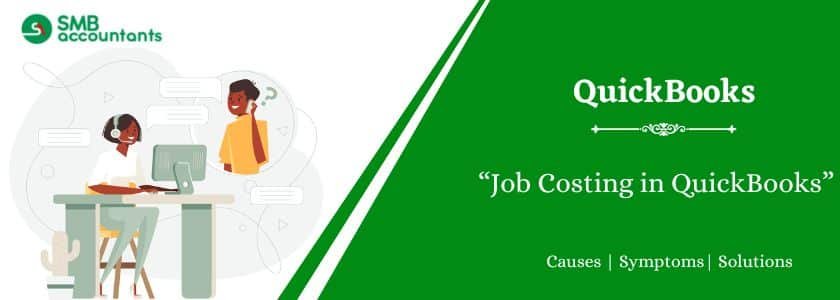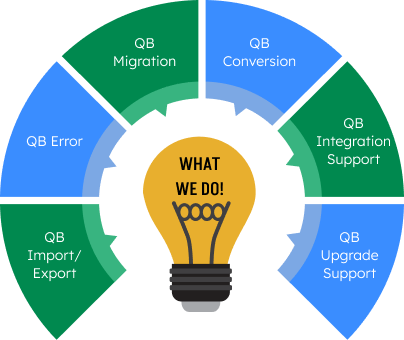Job costing is an essential accounting method that enables businesses to track expenses and profitability for individual projects or jobs. This approach is particularly valuable for industries such as construction, advertising, medical services, and law firms, where understanding the financial details of each project is crucial.
Table of Contents
- 1 What is QuickBooks Online Job Costing?
- 2 Why is it Important?
- 3 Key Benefits of Job Costing:
- 4 Job Costing vs. Process Costing:
- 5 How to Prepare Job Costing in QuickBooks?
- 6 Alternate Step-by-Step Guide to Job Costing QuickBooks Online
- 7 How to Calculate Job Costing:
- 8 Best Practices for Accurate Job Costing:
- 9 Conclusion
- 10 Frequently Asked Questions
- 11 Adams Williams
What is QuickBooks Online Job Costing?
Job costing involves monitoring revenue and expenditures on a per-project basis and then evaluating the real costs against the initially estimated costs. While QuickBooks Online isn’t explicitly tailored for job costing, it provides functionality that can be effectively harnessed for this precise task.
Get Expert Advice to Fix All Accounting & Bookkeeping Problems

Why is it Important?
The utilization of QuickBooks Online for job costing plays a crucial role in monitoring the precise expenses associated with labor, materials, and overhead for individual projects. This practice aids in gaining insights into potential cost reductions for future projects, making it an indispensable tool for businesses.
Key Benefits of Job Costing:
- Accurate Cost Estimates: By analyzing past project costs, businesses can generate precise estimates for future projects, enhancing budgeting accuracy.
- Financial Projections and Invoicing: Detailed tracking of project expenses aids in creating reliable financial projections and streamlining the invoicing process.
- Profitability Analysis: Job costing allows businesses to assess which projects are profitable, helping maintain desired profit margins and informing strategic decisions.
- Efficient Resource Management: Understanding the costs associated with labor and materials helps in better managing employee time and resources, leading to improved operational efficiency.
Job Costing vs. Process Costing:
While job costing focuses on tracking costs for specific, individualized projects, process costing is used for mass-produced items that are identical. In process costing, the total cost is divided by the number of units produced to determine the cost per unit.
How to Prepare Job Costing in QuickBooks?
Step 1:
- Here, select the Company Name and then click on Gear Icon which is at the top right corner of QuickBooks Online, now, select company settings.
Read more: Where is the gear icon
Step 2:
- Now, go to the Sales tab, select Sales from the menu, and then click on the box next to the custom transaction. You need to have this for invoicing of progress and to receive purchase orders (partial):
Step 3:
- The next thing you need to do is notify QuickBooks that you need to track expenses by customer (if it is necessary, notify that you need to make changes in items billable and expenses).
Step 4:
- To perform the task, select the Expense tab on the screen, and click on edit check bills and expenditures.
Step 5:
- Now, click on Show Items on purchase and expense forms, and then track your expenses with the name customer, to make items billable and expenses.
Step 6:
- Now, click on Save Button.
Step 7:
- In the last part of the set-up, you need to do Estimates.
- Go to the settings screen and click on the advanced tab.
Step Eight
- In the menu, click on automation.
Step Nine
- Here, you need to make sure that the Copy estimates to invoices are checked
Step Ten
- Now, select the Save button and then click on the done button which is at the bottom of the screen.
Alternate Step-by-Step Guide to Job Costing QuickBooks Online
- Track Expenses by Customer: In the Company Settings, you can adjust your expense tracking preferences.
- Update Settings on Your Customer List: Use sub-customers to adjust your customer list settings.
- Adjust Settings on Products & Services: For job costing, set up products and services.
- Submit Estimates and Invoices: The first step is to prepare an Estimate, have your customer approve it, and then convert it into an Invoice.
How to Calculate Job Costing:
To calculate the total cost of a job, sum the following components:
- Labor Costs: Wages paid to employees working on the project.
- Material Costs: Expenses for materials and supplies used in the project.
- Overhead Costs: Allocated costs such as utilities, rent, and other indirect expenses associated with the project.
Best Practices for Accurate Job Costing:
- Assign Cost Codes: Utilize specific codes for tasks or items within a project to organize and track expenses more effectively.
- Leverage Accounting Software: Implementing accounting and payroll software can automate the tracking of labor costs and expenses, reducing manual errors and saving time
By adopting job costing practices, businesses can gain detailed insights into project expenses and profitability, leading to more informed financial management and strategic planning.
Conclusion
Job costing in QuickBooks is a powerful feature that allows businesses to accurately track expenses, labor, materials, and overhead for specific projects. Whether you’re a contractor, freelancer, or small business owner, implementing job costing helps improve project transparency, profitability, and financial decision-making. With detailed reporting and real-time insights, you can manage your budget better, avoid cost overruns, and enhance your bottom line. Mastering this feature ensures your business stays competitive and financially healthy.
Need Professional Help?
Need help setting up job costing in QuickBooks or facing trouble tracking your project expenses? Visit our website or contact us today for expert guidance on managing your business finances with precision.
Frequently Asked Questions
Q 1: What is job costing in QuickBooks?
Ans: Job costing is a method in QuickBooks used to track and allocate all costs related to a specific job or project, including labor, materials, and overhead.
Q 2: Why is job costing important for small businesses?
Ans: Job costing helps small businesses understand project profitability, control expenses, and make informed pricing and budgeting decisions.
Q 3: Can I track employee time for job costing in QuickBooks?
Ans: Yes, QuickBooks allows time tracking, which can be assigned to specific jobs to calculate labor costs accurately.
Q 4: Is job costing available in all versions of QuickBooks?
Ans: Job costing features are available in QuickBooks Desktop versions like Pro, Premier, and Enterprise. Some features are also accessible in QuickBooks Online with add-ons.
Q 5: How do I generate a job costing report in QuickBooks?
Ans: Go to the Reports section, search for Job Costing Reports, and choose from options like Job Profitability Summary or Detail to analyze job-specific expenses and income.

Adams Williams
Adams Williams is a seasoned accounting professional with over 4 years of experience in bookkeeping, financial reporting, and business accounting solutions. Specializing in QuickBooks software, Adams combines technical expertise with clear, accessible content writing to help businesses streamline their financial processes. His insightful guides and how-to articles are crafted to assist both beginners and seasoned users in navigating accounting software with confidence.



